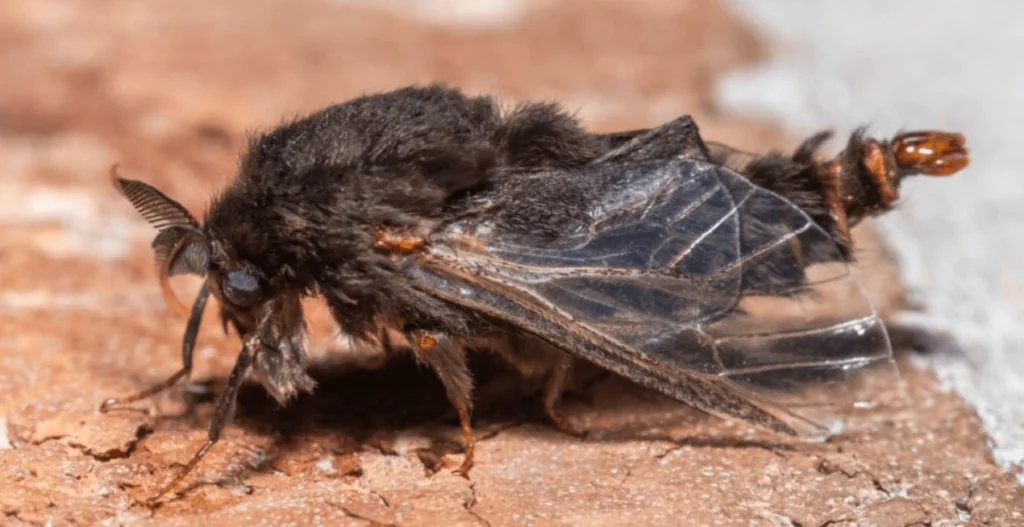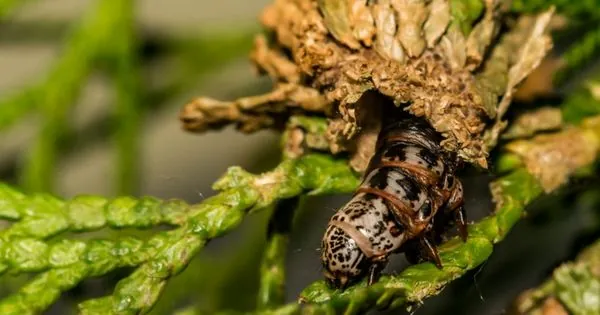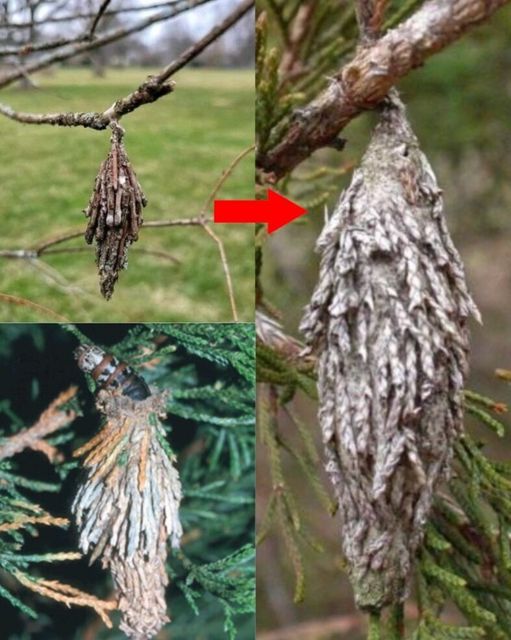Did you know that your favorite trees could be thinning and losing their beautiful pine needles right under your nose? The cunning culprit? The notorious evergreen bagworm, despite its misleading name, is actually a moth in its larval stage. If left to its own devices, this sneaky pest can wreak serious havoc on your cherished greenery, potentially leading to the untimely demise of your trees. But fear not! There are ways to save your beloved trees if you know what to do.

The Evergreen Bagworm: Nature’s Silent Tree Assassin
In the grand scheme of pests that pose a threat to the vitality and splendor of trees, the evergreen bagworm stands out. These minuscule, seemingly inconspicuous critters hail from the family Psychidae and are famed for their distinctive protective cases, which are sometimes known as bags or pouches. Crafted from bits of foliage, twigs, and bark, these bags dangle from the branches of trees, stealthily sheltering the bagworm larvae.
The Anatomy of an Evergreen Bagworm
Scientifically referred to as Thyridopteryx ephemeraeformis, these bagworms are moths that pose a menace to both evergreen and deciduous trees. Armed with mobile shelters and expert camouflage, they appear as little bags hanging from tree branches. This camouflaged bagworm caterpillar is, indeed, undergoing its larval stage.
The Lifecycle of the Evergreen Bagworm
To effectively tackle an evergreen bagworm infestation, understanding their lifecycle is key. The adult female deposits her eggs within her case and subsequently attaches it to a tree. Once late spring or early summer rolls around, these eggs hatch into minuscule larvae that then embark on the quest for a suitable host tree. They commence constructing their bags using silk generated by specialized glands in their bodies.
As the larvae moult and grow, they periodically emerge to reinforce their bags with more plant matter. Over time, the bag becomes increasingly elaborate. By late summer or early fall, the bagworm larvae are mature. Approximately six weeks after, they commence pupation.

Within the confines of their bags, the larvae undergo metamorphosis from the larval to the adult stage. Eventually, pupae form deep in the hidden bagworm nests. After a couple of weeks, adult moths make their grand exit through a conspicuous round hole in their bags. Wingless females remain close to their birthplace, while their darker, smaller, and winged male counterparts set off in search of females.
The Destructive Feats of the Evergreen Bagworm
Though they may seem harmless at first glance, evergreen bagworms can inflict serious damage if left unaddressed. These insatiable eaters feast on foliage, cleverly hiding in their bags, making them difficult to detect until it’s almost too late. Their feeding habits result in foliage drop, hindering the tree’s ability to photosynthesize and produce vital nutrients necessary for survival and growth. Additionally, the feeding weakens trees, leaving them vulnerable to other diseases, pests, and environmental stressors. If these stealthy invaders go unchecked, they can ultimately prove fatal to your trees.
Tackling an Evergreen Bagworm Infestation
Addressing an infestation promptly and efficiently is crucial in mitigating the damage posed by evergreen bagworms. Let’s delve into some strategies and tactics to consider:
Preventing Evergreen Bagworm Havoc
Preventing an evergreen bagworm invasion is always the preferable option over having to treat one that’s already taken root. Adopting these methods will help reduce the likelihood of an infestation and bolster your tree’s overall health.

Regularly inspect your trees for signs of bagworms, such as bags suspended from branches. Prune and dispose of bags before larvae develop and spread. Enhance biodiversity within your landscape by planting an assortment of tree species. This will help thwart bagworms from zeroing in on your trees.
Evergreen bagworms may be discreetly small, but they possess a formidable ability to stealthily undermine your trees’ health. By familiarizing yourself with their lifecycle, recognizing their destructive potential, and implementing sound management practices, you can defend your trees from these treacherous invaders.
Regular inspections, preventative measures, and sustained tree health care are paramount in keeping these pests at bay and preserving the beauty of your landscape. Don’t let the silent threat of evergreen bagworms compromise the health and charm of your trees. Take decisive action today to safeguard your cherished greenery!




